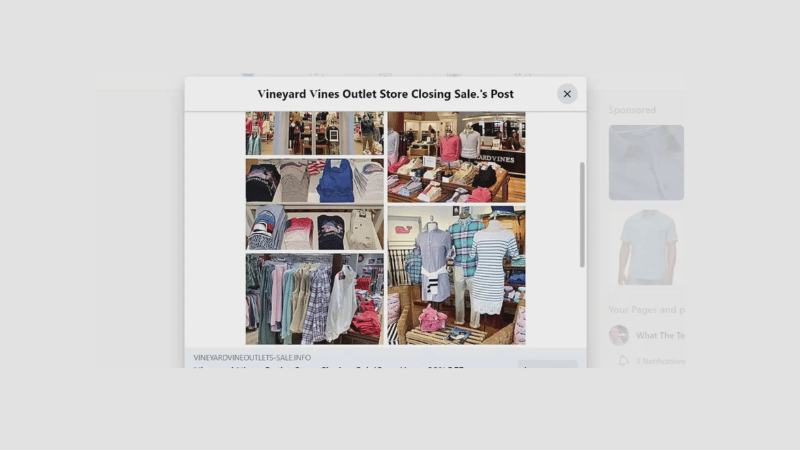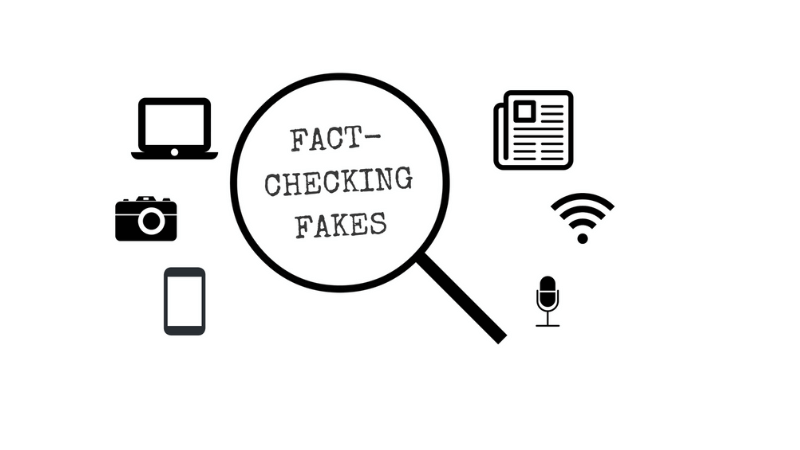Have you ever scrolled through Facebook and come across ads that sound so “too good to be true”? Massive discounts, free giveaways, or links leading to suspicious websites – all could be a scam tactic. In reality, more users are losing money or having their data exposed simply because they click on fake ads. Therefore, knowing how to spot fake ads on Facebook is not just a useful skill but also an “armor” protecting you in the online world. This article will point out the subtle red flags and smart ways to handle them so you always stay safe while interacting on social media.
Spotting fake Facebook ads at a glance
Facebook constantly monitors user behavior to display relevant ads, allowing both real and fake ads the chance to appear before you. Among the thousands of ads appearing daily on Facebook, a significant portion of content is created with the intent to defraud, steal information, or lure users into virtual shopping traps. This makes distinguishing the genuine from the fake a mandatory skill for anyone who frequently uses social media. Early identification of these tricks will help you be proactive, avoid unnecessary risks, and protect your wallet and personal accounts.

Abnormal links are easy giveaways
One of the most common ploys in fake ads is the use of impersonation links. You might see an ad with links that look very similar to a real website, but a closer look reveals the domain name has been altered: strange characters added, the letter “o” replaced with the number “0,” or an added, lengthy, confusing string. This is a crucial sign, as scammers often exploit user haste to make them click and enter personal information. A small tip is to hover your mouse over the link to preview the path or copy and paste it into your browser in safe mode to check. If any detail makes you suspicious, you should absolutely not proceed.
Unreliable images and videos
Besides the link, the images and videos in the ad can also expose the “falsification.” Real ads from credible brands are usually carefully invested: clear images, transparent information, and the official logo. Conversely, fake ads often use generic online images, blurry quality, or clumsy edits. Some videos even feature misleading voiceovers, poor translation in subtitles, or misleading collages. If you see an ad with overly simplistic images or ones that look “too familiar” from seeing them elsewhere, it’s very likely a sign of a scam ad. Don’t hesitate to do a reverse image search to verify the origin.
Be wary of overly generous offers
Another effective tactic scammers frequently use is the “bait” of super-huge offers. 80% discounts, free product giveaways, or deals only available for a few hours—they sound appealing, but most are traps. User psychology is often easily drawn into these offers, prompting them to click and buy immediately. However, remember the rule: “If it’s too good to be true, it probably isn’t.” Instead of rushing to place an order, check the brand’s official page or research through reputable channels. Taking a few minutes to verify can help you avoid the risk of losing money unnecessarily or receiving poor-quality products.
The real vs. fake ad vetting toolkit
Distinguishing between genuine and fake ads on Facebook is no longer just for the “tech-savvy.” Anyone can become a victim when encountering increasingly sophisticated scams. To protect yourself, you need to equip a simple yet effective “vetting toolkit.” These tools will not only help you assess the ad’s reliability but also limit the risk of losing money, exposing personal information, or being led to malicious websites. Below are three critical factors you should apply immediately whenever you see a suspicious ad on Facebook.

Scrutinize the fanpage and original website
The first starting point when suspicious of an ad is to check the Facebook page or the original website. A truly credible brand invests carefully in the page’s visual identity, post content, and how it responds to users. Look for this: a genuine Fanpage usually has a large following, posts are updated regularly, and there is consistency in imagery and brand language. Conversely, hastily created “fake pages” often have only a few dozen to a few hundred likes, with fragmented content and a lack of professionalism. Furthermore, when clicking the website link in the ad, carefully check the domain name. Official brands use clear domain names, often ending in .com or .vn. If the link contains strange characters, misspellings, or is excessively long, it’s highly likely to be an impersonation site.
Read community reviews
Another way to quickly distinguish between real and fake ads is to consult the community. Users often leave comments, reviews, or share experiences under ad posts. If you see many negative responses like “item not as pictured,” “poor service,” or “this page is a scam,” you should be immediately cautious. Conversely, reputable brands often receive positive feedback, accompanied by real photos from customers who have purchased. Additionally, you can search for the Fanpage or brand name on Google, forums, and Facebook groups to see what the community is saying. This is valuable information, as those who have experienced poor service often won’t hesitate to “call out” the poor quality.
Use Facebook’s reporting feature
Don’t forget that Facebook has a built-in tool for reporting fake or misleading ads. If you discover content with signs of fraud, click the three dots in the ad’s upper right corner and select “Report ad.” This action not only helps you avoid seeing that ad in the future but also contributes to helping Facebook process and limit the spread of fraudulent pages. Reporting, though a small action, is significant because it helps make the user community safer. If many people report, the chances of the fake ad being removed increase, reducing the risk of harm to others.
Solutions for protecting yourself from fake ads
Fake ads on Facebook are becoming a pressing issue as more users inadvertently fall into scam traps. From tempting “shock discount” calls to action to unbelievable “sweepstakes” programs, scammers always know how to exploit users’ psychological desire for low prices and curiosity. If you’re not careful, you could lose personal information, bank accounts, or even real money. Therefore, proactively equipping yourself with defense solutions is extremely necessary. The three crucial principles below will help you feel more confident when facing any suspicious ad on Facebook.

Keep personal information safe
Your personal information online is worth much more than you think. If you expose your phone number, email, or address, criminals can exploit it for spamming, fraud, or even taking over access to other important accounts. One of the common scam tactics is to create a registration form with attractive gifts, such as free vouchers or a chance to win a prize draw. Users often easily fill out their personal information without checking the brand’s legitimacy.
To avoid this situation, you should:
- Only provide information to websites with a security certificate (https:// and the green padlock).
- Carefully check the Fanpage or the original website before filling out any form.
- Do not share sensitive data like ID numbers, bank accounts, or OTP codes via Facebook ads.
Keeping your personal information safe is the most crucial step to “blocking” the risk of being exploited by fake ads.
Limit clicks on strange links
A seemingly harmless habit—clicking on links in ads—is actually the fastest way to lead you to phishing websites. These links often have domain names that closely resemble a famous brand, such as “amaz0n-sale.com” or “shopee-bonus.net,” making many people mistakenly believe they are the official website. Once accessed, you may be prompted to download an app, log into an account, or enter credit card information.
To limit risk, adopt the habit of:
- Hovering or pressing and holding to preview the destination link before clicking.
- Only access the website through the official application or address.
- Absolutely do not download files from strange ad sources, as they may contain viruses or spyware.
Remember, “one click” can cost you a significant amount of money, so being cautious with strange links will keep you much safer when scrolling through Facebook.
Regularly update on new scam tactics
Scammers never stand still. They are constantly inventing new scam scenarios, from purchase ads and financial investments to impersonating banks and e-wallets. If you only rely on old experiences, you can easily be “fooled” by new tricks. Therefore, regularly updating information about scams is an essential part of self-protection.
You can proactively follow technology news, read warnings from official agencies, or join anti-scam community groups. Additionally, Facebook also regularly updates its safety policies and information about common fraudulent forms—take advantage of these official sources to equip yourself. When you understand what tactics scammers are using, you won’t easily fall into their cleverly designed “trap.”
Regularly updating your knowledge not only helps you protect yourself but also allows you to share warnings with family and friends – making social media a safer environment for everyone.
Frequently Asked Questions
In many cases, scammers hack a Fanpage that already has a verification badge to run scam ads. To identify it, you should check the post history; if the previous content is completely different from the current ad’s field, the Fanpage has likely been compromised. Compare the web link in the ad with the brand’s official website. Observe the language: fake ads often have spelling errors and use urgent, clickbait language.
Yes, and you should do it immediately. Emergency steps include logging out of all browsers and clearing the cache and cookies. Change the passwords for your Facebook, linked email, and bank accounts if you entered any information. Activate two-factor authentication to reduce the risk of further hacking. Even if you don’t see any unusual signs yet, changing passwords is a necessary protective layer after exposure to a fake link.